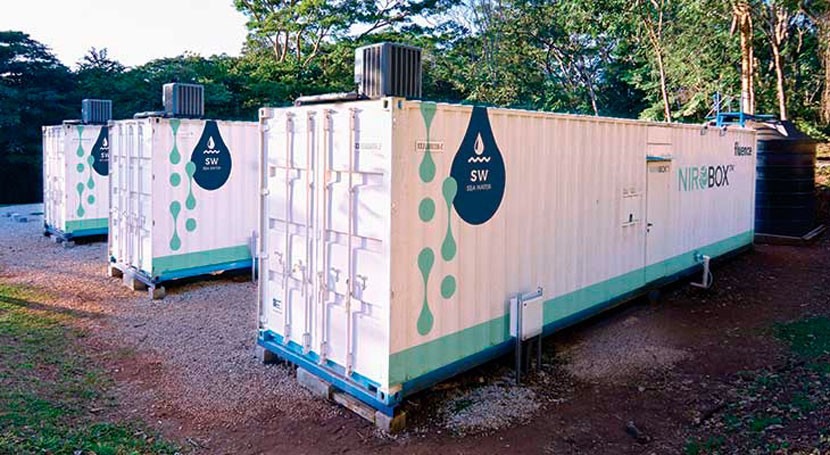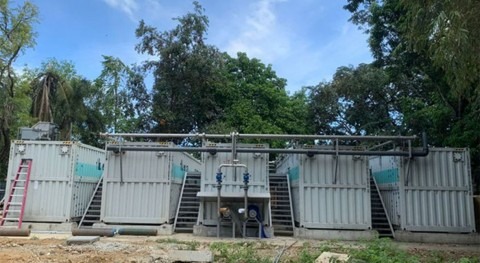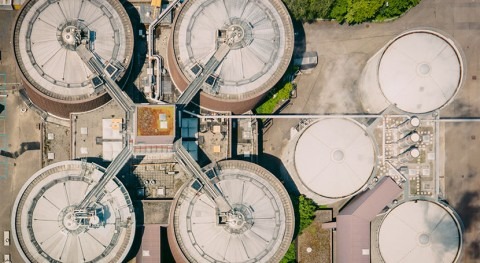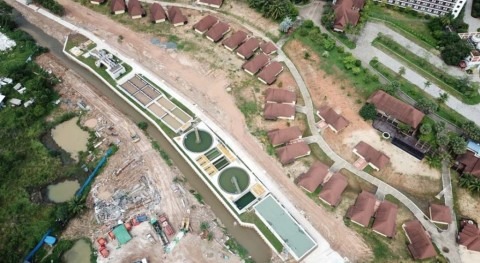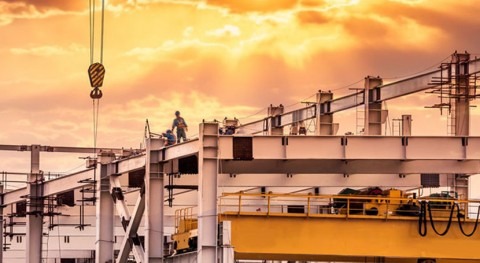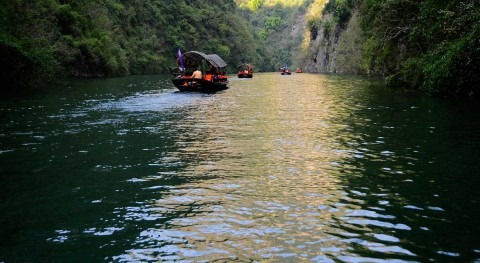Decentralized treatment is simply the practice of locating water and wastewater treatment plants at the site of water supply, demand, or ideally both. It’s a flexible, sustainable alternative to large treatment plants that require miles of expensive supply and delivery infrastructure.
As the climate changes and water supplies are depleted by municipalities, agriculture, and industry, there’s a growing need for effective and efficient treatment in remote locations around the world. In addition, the energy to power these plants and the chemicals needed for treatment create environmental and financial impacts that must be minimized.
According to the United Nations Food and Agriculture Organization, water scarcity is one of the greatest challenges of the 21st century. Water scarcity affects not only human health and the environment, but also local economies, which depend on water for business, industry, and agriculture.
Theoretically, there is more than enough fresh water on Earth to meet human needs. However, it is unevenly distributed, and much of it is not easily accessible, including water stored in snow and ice, remote lakes and rivers, and deep underground.
Salt and brackish water are far more plentiful than fresh water, yet without treatment to remove the salt, they are unusable. Meanwhile, much readily obtainable fresh water has been polluted by agricultural, municipal, and industrial sources — as well as literally flushed down the toilet.
These facts add up to an increasing need for sustainable water and wastewater treatment facilities, but conventional designing, financing, permitting, building, and commissioning of new plants may take years and the costs can be crippling.
Benefits of Decentralized Treatment
Decentralized treatment is an important solution for global water scarcity and climate resilience challenges for a number of reasons:
- Locating plants near the source of supply and need eliminates the prohibitive costs of pipelining to distant plants.
- Scalable and portable plants avoid the prohibitive expense of large projects and limit the risk of economically crippling “white elephant” plants that can be obsolete before they’re even paid for.
- Lower energy requirements enable off-grid operation on alternative energy sources.
- Smaller-scale projects may eliminate politically challenging negotiations across diverse regions and facilitate local control of community water treatment systems.
- In industry, decentralized treatment can provide quality control for individual sites and improve community relationships by reducing ecological impacts and reliance on local water resources.
Decentralization Coming Into Its Own
Although the advantages of decentralized treatment have long been recognized, technological and logistical challenges have limited its application. But new advances in both technology and packaging have widened decentralization’s potential spread.
The Smart Packaged technology for advanced wastewater treatment and desalination solutions in Fluence’s NIROBOX™ and Aspiral™ lines now make decentralization not only viable but a best option in many cases.
For instance, revolutionary reverse-osmosis technology in the Nirobox line radically reduces maintenance and the cost of desalination. A single Nirobox unit contains all process equipment needed to produce desalinated water ready for use, including pretreatment to remove suspended solids and reverse osmosis (RO) for desalination, as well as devices for energy recovery, chemical dosing, compressed air supply, instrumentation, and controls.
And, Aspiral wastewater treatment plants are based on membrane aerated biofilm reactors (MABRs), which use passive aeration to slash energy costs, minimize chemical use and sludge production, while producing an effluent suitable for reuse in irrigation. Energy use is reduced to the point that alternative energy sources are viable in off-the-grid applications.
Here are some of the advantages offered by Fluence decentralized solutions:
- Packaging in standard shipping containers makes transport by ship, rail, or truck possible.
- Site prep and construction are minimized because the steel containers are the units’ housing.
- Plug-and-play units allow for quick commissioning.
- A small footprint, and low-odor and low-noise operation make decentralized plants viable in dense urban areas, remote agricultural communities, and resorts where aesthetics are key.
- Portability allows means plants can be quickly scaled up or down by adding or removing units, which can be redeployed or sold.
- Weatherized steel shipping containers are resilient enough for salt air, temperature extremes, and an unpredictable weather future.
Decentralization Case Studies
The coupling of new, cost-effective technology with plug-and-play, containerized packaging is a combination that’s making decentralization more viable than ever. Here are a few examples of Fluence decentralized solutions making a difference around the world:
Sewage Treatment for Highway Rest Stops
One major new project in China (PRC) is placing 80 Aspiral wastewater treatment plants at highway service areas 50 km apart. In this case, decentralization eliminates the need for thousands of kilometers of pipeline. The effluent produced meets China’s Class 1A environmental standards, so it can safely be used for irrigation or released into the environment. The project will use Fluence 20-foot Aspiral S1 containerized units that each treat up to 75 m3/d, and 40-foot L4 units that each treat up to 200 m3/d.
Resilience After Weather Emergencies
A Fluence MABR plant serving a small community on St. Thomas in the United States Virgin Islands weathered a Category 5 hurricane that devastated the island. The low energy requirements of MABR wastewater treatment allowed the community to quickly reestablish treatment on a generator while much of the island’s water infrastructure remained inoperable.
Very High-Quality Effluent
A containerized MABR pilot plant in California successfully proved the technology’s compliance with the state’s strict Title 22 water regulations, opening the way for expanded use of the technology.
Low-Profile Operation
Decentralized desalination with Smart Packaged units has found a home in the tropics, too, with Fluence plants providing abundant drinking water where inadequate water resources threatened the operation of resorts. In Costa Rica’s pristine Reserva Conchal, for instance, Fluence desalination Nirobox units were installed out of sight to provide approximately 1,500 m3/d of drinking water.
Scalable for High Output
A new Fluence plant on the Bahamian island of North Bimini, will use three NIROBOX™ SW units to supply 800,000 GPD (3 million L/d) of fresh water to a resort that features luxury suites, a new Hilton hotel, pools, a spa, a salon, a marina, a casino, and landscaping. Yet there will still be excess water to share with the rest of the island to nurture the resort’s important local relationships.
Financing
Beyond low operating expenses and easy commissioning, there is still one more essential condition to a flourishing global decentralized water future: flexible financing structures that fit the needs of customers.
Fluence has long experience in financing worldwide, offering customizable packages and business models through international private banks and financing partners, as well as national and international financing agencies.
Fluence is a mission-driven company, and part of that vision is to provide fast-to-deploy, resilient, decentralized water and wastewater treatment to a rapidly changing world. Contact our experts to learn more about Fluence’s decentralized water and wastewater treatment solutions.


